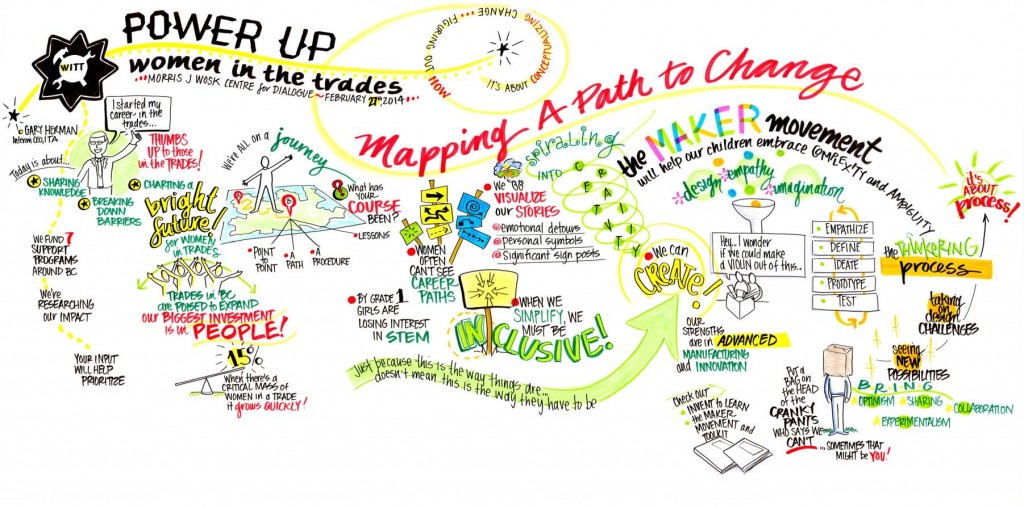Category Archives: Maker
Sicamous
Published on Apr 2, 2014
The Sicamous School District, in partnership with UBC’s Innovative Learning Centre (ILC), held the first Maker Day with students in B.C. on March 13, 2014. Over 80 students from five different schools came together to engage in design thinking and hands on trades activities. The ITA and UBC’s ILC are supporting Maker Days through-out BC to ‘take making into schools’. For more information on Maker Days, visit http://www.itabc.ca/events/maker-day.
Maker Day Video SD#23
Published on Apr 3, 2014
The Faculty of Education’s Innovative Learning Centre and the Industry Training Authority collaborate with Okanagan College and Women in Trades to host a Maker Day experience.
Maker Day Video #2
https://www.enewsletters.gov.bc.ca/Education/Focus_on_Skills_April2014_newsletter/edition
“Maker Days” in the Okanagan
The University of British Columbia, in partnership with The Industry Training Authority, piloted 5 “Maker Days” as a way of introducing trades and technology and experiential learning opportunities from Kindergarten to Grade 12. At Maker Days, students and educators are introduced to “making” through small group design challenges that encourage invention, prototyping, and experimenting. Educators are asked to take “making” back to their schools and share it with their colleagues and students.
Here’s what happened at two of these recent Maker Days:
School District 23 (Central Okanagan) held a Maker Day on March 11. 72 educators, representing 40 of the 42 elementary, middle, and secondary schools in the district, attended. 37 schools have since signed up to run their own Maker Day type event with their students.
On March 13, 2014, the ITA and UBC held the first Maker Day with students in Sicamous. Over 80 youth took part in design thinking and a variety of hands-on trades activities. Check out the YouTube video of this event at https://www.youtube.com/watch?v=5qfSG7yPJ0Y&feature=youtu.be.
Maker space tool requirements
This article first appeared in MAKE Volume 38, on pages 28–29.
There’s a scene in Iron Man 3 where a young boy comes home from school to discover that his workshop has been outfitted with just about every cool maker gadget and tool imaginable, all provided by billionaire Tony Stark as a thank-you to the boy for assistance earlier in the movie. Only a handful of tools are recognizable — what’s memorable is the huge grin on the kid’s face when he opens that door and sees all the possibilities that are available to him. Yes, he’s a fictional character, but his real-life counterparts are out there — millions of American kids just waiting for their own workshops and hungry to learn and experiment and build.
How many of the nation’s 54 million elementary and secondary students have access to the state-of-the-art tools that can spark creativity, nurture curious minds, and ignite the next wave of innovators? Probably less than 1%. Even assuming a generous 5%, that leaves more than 51 million students (just in the USA) without any hands-on time with tools that are nothing short of inspirational.
Just eight years ago, in MAKE Volume 03, Saul Griffith provided a detailed list of “The Maker’s Ultimate Tools” that would allow a maker to “make pretty much anything.” Unfortunately, only a real-life Tony Stark could afford every item on that list, which included a $1,000,000 excimer laser cutter, a $150,000 NC (numerically controlled) lathe, and a $100,000 water jet.
http://makezine.com/magazine/make-38-cameras-and-av/kids-makerspace/?utm_source=feedblitz&utm_medium=FeedBlitzEmail&utm_content=150060&utm_campaign=0
Maker Day – Eagle River Secondary School
Building scholarship
“Here are a few other tools for getting into a “making” mindset:
Bitstrips. Adeline reviews the completely addictive Bitstrips, which offers basic formats for types of panel-based storytelling and simple art for adding characters, backgrounds, and scenes to your comic. Check out Nick Sousanis’ hand-drawn comic dissertation for inspiration.
3D Printing. Jason gave his first impressions of 3D printing, a form of powerful and flexible making that may one day replace Lego in movie metaphors. If you don’t have one at your university, look for a Makerspace in your city.
Imagequilts. Natalie reviewed this new Chrome browser extension which has great potential as a way to pull together data sets or look for patterns. If you want to see where this type of thinking about images can lead, check out the recent self-portrait investigation project Selfiecity.
Twine. Currently my favorite platform for interactive text, Twine is a great tool for easily building choice-based games. Check out Impostor Syndrome by Georgiana Bourbonnais for an example of how powerful Twine can be.
“
http://chronicle.com/blogs/profhacker/lego-and-making-things/55829?cid=wc&utm_source=wc&utm_medium=en


